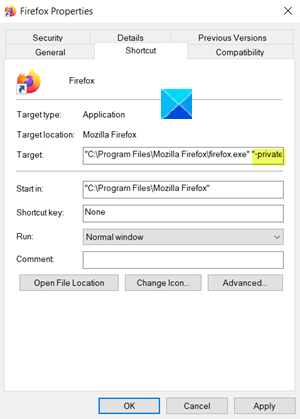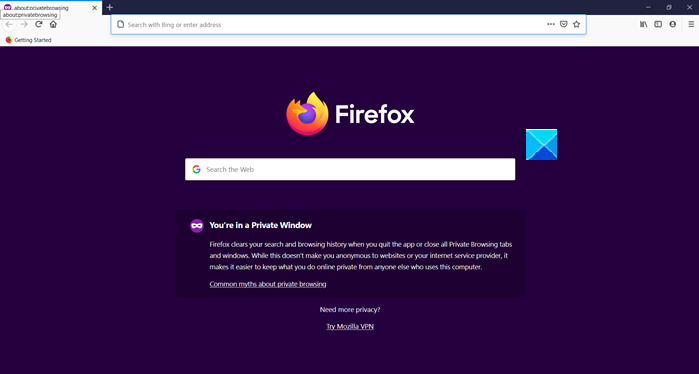Launching the Firefox browser in Private Browsing mode will stop it from keeping a record of visited sites to the browsing history. You can even create a shortcut to open Firefox in Private Browsing mode, directly. Follow these steps to get started!
Create a shortcut to open Firefox in Private Browsing Mode
Normally, every browser you use to browse the web stores a history of all the websites you visit. It does this to use them for future sessions. Firefox Private Browsing Mode stops them from storing any data about your online activity.
- Right-click the Firefox browser Desktop shortcut.
- Choose Properties to open the Firefox Properties window.
- Switch to the Shortcuts tab.
- Add “-private” argument at the end of the address in the Target box.
- Click Ok.
- Launch the browser.
Let’s cover the process in a bit of detail!
Create a Desktop shortcut for the Firefox browser.
Right-click the shortcut icon and select Properties from the Context menu.
Under the Firefox Properties window, switch to the Shortcuts tab.

In the target box of the Firefox Properties window, add -private argument as shown on the screenshot above.
So the Target will be:
"C:\Program Files\Mozilla Firefox\firefox.exe" "-private"
Click the OK button at the bottom of the window to continue.
If prompted to provide Administrator access, hit the Continue button.

Hereafter, every time you click the Firefox browser shortcut, it will launch the browser in Private Browsing mode, directly. So, instead of firing up Firefox and then clicking on the toolbar icon – ‘Open a Private Browsing window’ every time, use this shortcut to launch Firefox in Private Browsing Mode.
You should be aware of two things here. First, Private Browsing mode will only load extensions that you’ve enabled to run in Private Mode. Secondly, when you have an InPrivate window open and you open a separate one, Firefox will continue using your private browsing session. To exit, you’ll need to terminate the Private Browsing session.
Related reads: